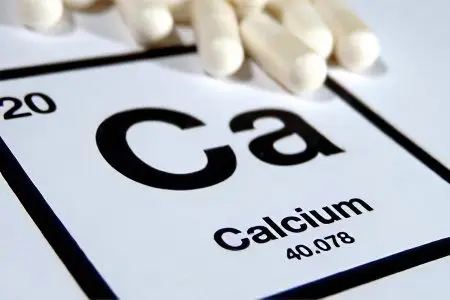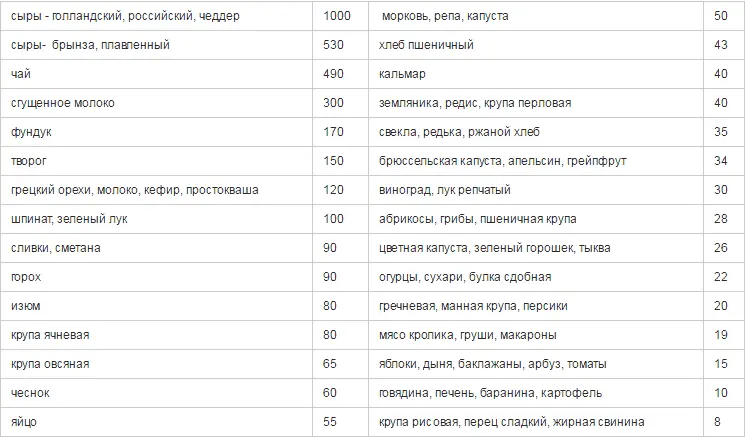Contents
Osteoporosis is a systemic disease in which the processes of destruction of bone tissue prevail over its ability to regenerate and strengthen. In this case, calcium salts are washed out of the bones, as they become unable to keep them inside. As a result, increased bone fragility, a high tendency to fractures, which occur even with little external impact. It can be an ordinary bruise, a careless movement, a fall.
Osteoporosis is a dangerous disease that can lead to death. More often than not, people die and become disabled only because of cardiovascular pathologies, diabetes mellitus and cancer.
The insidiousness of the disease also lies in the fact that osteoporosis develops with a minimal set of symptoms. The patient begins to feel them when the treatment becomes ineffective – this is the stage during which fractures often occur.
Factors affecting the development of osteoporosis

The main factors contributing to the development of osteoporosis:
Lack of calcium in the body due to dietary errors. This may be an unbalanced diet, adherence to a variety of diets, fasting, etc. A lack of calcium in the body often provokes malfunctions in the absorption of vitamins and trace elements.
Physical inactivity. Prolonged stay in a lying, immobilized position leads to the fact that osteoclasts are activated in the body. They destroy bone tissue, disrupt its mineralization. In this regard, a long stay in a state of weightlessness is dangerous. In this regard, people diagnosed with osteoporosis should maintain constant physical activity.
Hormonal disorders. The disease can develop due to any hormonal imbalance – these are failures in the production of thyroid hormones, parathyroid glands, sex hormones and pituitary hormones.
Secondary osteoporosis can develop with excessive consumption of alcohol, coffee, in the presence of such a bad habit as smoking, as well as against the background of blood diseases, against the background of rheumatism, kidney failure, diabetes mellitus.
If a person consumes too much sparkling water, then bone disease can develop in him even at a young age. It has been proven that most carbonated drinks contain substances that help leach calcium from bones.
Another reason for the development of osteoporosis is a violation in the digestive system, in the functioning of the cardiovascular system.
Diseases of the spine develop mainly in old age, after 60 years. Women suffer more often than men, the disease is detected in them after the onset of menopause. In the male population, calcium in the bones lasts longer, its age-related loss occurs somewhat later.
The main symptoms of the disease are considered to be:
Violations in the structure of the bones, which leads to their deformation.
Stoop, loss of height due to curvature of the spine, periodontal disease.
Joint mobility disorders, both large and small. Habitual physical activity leads to rapid fatigue.
At night, the patient may be disturbed by cramps that occur in the lower leg. There may be dull pains of a aching nature, or sharp pains in the spinal column and in the joints. Pain becomes especially intense during a change in weather.
It is impossible to stop the development of osteoporosis, it is an obligatory companion of the aging of the whole organism. It is possible to prevent the washing out of calcium from the bones only when it is caused by another pathology. However, this does not mean that it is impossible to slow down the rate of development of the disease. A well-designed treatment regimen eliminates the development of complications.
Methods of diagnosis
X-ray examination is the most common method of diagnosing the disease. However, it is only informative when more than 30% bone loss has occurred. It takes a long time to treat such a patient, and the effect is not always achieved.
CT scan. With the help of a tomograph, a disease can be detected at an early stage of its development. For this, the devices are equipped with a special attachment. Also, an ultrasound machine helps to identify the disease. But at the same time, using these devices, it is possible to study the state of only one part of the body. While in order to assess the extent of the spread of the pathological process, it is necessary to examine several departments.
Osteodystrophy. Modern medicine has X-ray densimeters, thanks to which it is possible to assess the mineral density of bone tissue in several parts of the body at once. Moreover, the accuracy of such a study is high. It is possible to track even 2% loss of bone mass, as well as to identify the level of muscle mass and fat in the body, the calcium content in the bones. These data are correlated with the age and gender of the patient. Densitometric examination is safe for health, is carried out quickly and does not cause pain. There are no side effects after the diagnosis, so you can do it as many times as you need.
However, the cause of bone loss cannot be determined using these techniques. Only the attending physician can do this.
In addition to interviewing and examining the patient, he will send him to take the following tests:
Urine must be passed to determine the electrolytes in it;
Blood sampling allows you to determine the level of calcium, vitamin D and phosphorus in it;
Determination of the level of osteocalcin is required;
The excretory capabilities of the kidneys are being studied;
Donate blood for parathyroid hormone.
These studies, carried out in combination, allow you to make the most complete picture of the disease and prescribe the appropriate treatment.
Treatment of osteoporosis

Methods of treatment of osteoporosis directly depend on the nature of the disease. If it occurs as a secondary pathology, then the root cause of the disease will need to be eliminated – this may be a correction of immune disorders, diseases of the cardiovascular and digestive systems, etc.
The therapy is divided into the following components:
Basic treatment with medication. Its purpose is to correct metabolic processes in the bones. Treatment is long, continuous, phased.
Hormone replacement therapy.
Symptomatic therapy.
The operation is performed for osteoporosis of the hip and knee joint. If conservative therapy is ineffective, then endoprosthesis replacement of a worn joint with an artificial one is indicated. This helps to improve the quality of life of patients, its extension, as it eliminates the risk of spontaneous fracture of the femoral neck.
Primary treatment for osteoporosis
For the treatment of osteoporosis, regulators of calcium-phosphorus metabolism are prescribed.
These drugs replace the work of parathyroid hormones:
Calcitonins (Myacalcic). The hormone calcitonin prevents the loss of calcium from the bones, it also takes part in the process of their formation, and has an analgesic effect. The drug is made from salmon calcitonin and acts similarly to a person’s own hormone. For this purpose, drugs such as Osteover, Alostin, Veprena can be used.
Bisphosphonates are aimed at inhibiting the process of bone loss, normalize bone mineralization. It is possible to prescribe the following drugs: Risedronate, Alendronate, Ibandronate, Zoledronic acid (Xidiphon, Etidronate, Bonefos, Fosamax).
The complex preparation Osteogenon prevents the destruction of bone tissue (suppresses the synthesis of osteoclasts and stimulates the work of osteoblasts), promotes the process of bone formation.
Fluorine derivatives are aimed at stimulating the formation of bone tissue – these are Calcik, Fluocalcic, Osin, Coreberon.
To stimulate osteoblasts, the parathyroid hormone teriparatide – Forsteo is used. It must be given by injection.
All these drugs can be prescribed only by a doctor who will control blood and urine using laboratory diagnostic methods. This will allow you to evaluate the effectiveness of the treatment.
Bone breakage does not occur |
|
Bone tissue is formed normally | The level of osteocalcin in the blood at the age of 50 years is from 11 to 23 ng / ml. At the age after 50 years – from 15 to 46 ng / ml. |
Salt content (mmol/l) |
|
Hormone replacement therapy
Therapy with hormonal drugs is used very often. It is prescribed for people with severe osteoporosis, with a disease in the early stages of its development, and even for those patients who have only prerequisites for the development of pathology. For a woman who has entered the menopausal period, certain estrogen receptor modulators are prescribed. These are drugs such as Raloxifene, Keoxifene, Evista, Droloxifene. Their reception helps to stop the process of bone destruction, or significantly slow it down. In this case, the risk of fractures is reduced by exactly half.
It is possible to prescribe estrogens themselves, for example, Femoston, Kliogest, in combination with calcium preparations. But it should be remembered that taking estrogen-containing drugs affects the risk of developing gynecological cancers. To achieve the effect, you will need to take estrogens for at least 5 years. In parallel, the level of hormones in the blood is controlled. Cancellation of drugs is carried out in stages, reducing the dose slowly.
Estrogens should not be taken by those patients who are at risk for oncological diseases, as well as those patients who have a tendency to thrombotic complications. In addition, estrogen hormone therapy refers to maintenance therapy and is not able to replenish the level of calcium in the bones.
Calcium supplements for osteoporosis

To stop the development of the disease, you need to use calcium supplements. They work better than just including foods rich in this micronutrient in the menu.
To increase the absorption of calcium, additional vitamin D is prescribed, or a combined preparation is prescribed in which calcium is already combined with vitamin D. Also remember that there are easier forms of calcium for absorption, for example: calcium citrate, calcium glycerophosphate, calcium lactate, calcium chloride.
Modern method of treatment of osteoporosis
Doctors use a qualitatively new approach in the treatment of osteoporosis, it comes down to the following points:
It is necessary to accurately identify all areas of bone tissue affected by osteoporosis.
Then the lacunae of the bones are cleaned by the shock wave method.
The next stage is the introduction of animal tissue extract and ionized calcium under the periosteum.
Carrying out standard therapy.
This osteoporosis treatment regimen is applicable to patients of any age.
Symptomatic treatment of osteoporosis
Taking analgesics and myelorelaxants for pain and muscle spasms, taking NSAIDs for arthritis. This allows the patient to avoid the progression of the disease due to physical inactivity.
Treatment of fractures with surgery.
Passage of physiotherapeutic treatment, implementation of complexes of physiotherapy exercises.
Compliance with the diet with the inclusion in the menu of foods rich in magnesium, phosphorus, calcium.
Refusal to consume carbonated drinks.
Diet
You need to adjust your menu. To slow down the progression of osteoporosis, foods with vitamin D, calcium, and phosphorus should be included in it. These are not only fermented milk products, but also seaweed, spinach, broccoli, fatty fish, legumes, eggplants.
From the table it becomes clear how much calcium is contained in various foods. The calculation is based on 100 g of the product.

If calcium is being treated, then vitamin D should be taken in parallel, which increases the absorption of calcium by 20 times. If this is not done, then calcium will simply be excreted from the body by the kidneys. Being in the sun, you can enrich your body with this vitamin it needs.
At home, you can perform physical exercises prescribed by a doctor, do an independent massage.
Preventive measures
Prevention of osteoporosis is reduced to the following activities:
The mother must take care of the skeletal system of the child even while he is in her womb. To do this, she needs to take the vitamins that the doctor recommends. During childhood, attention should be paid to the accumulation of bone mass, for which the child should be properly fed, make sure that he is engaged in physical education, dancing, gymnastics, etc.
In adolescence and adulthood, inhalation of tobacco smoke, alcohol, and sweet soda should be avoided. Sex life should be regular.
During menopause, you should seek qualified medical help, since in the first 10 years after the onset of menopause, calcium is washed out of the bones especially quickly.
It is important to understand that osteoporosis is a disease that cannot be cured on its own. The information provided should not be taken as a guide to self-treatment. It is designed to ensure that people understand the danger of the disease and do not delay a quality diagnosis. Only a doctor treats osteoporosis.









